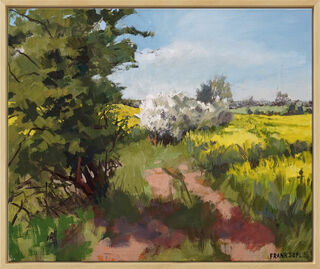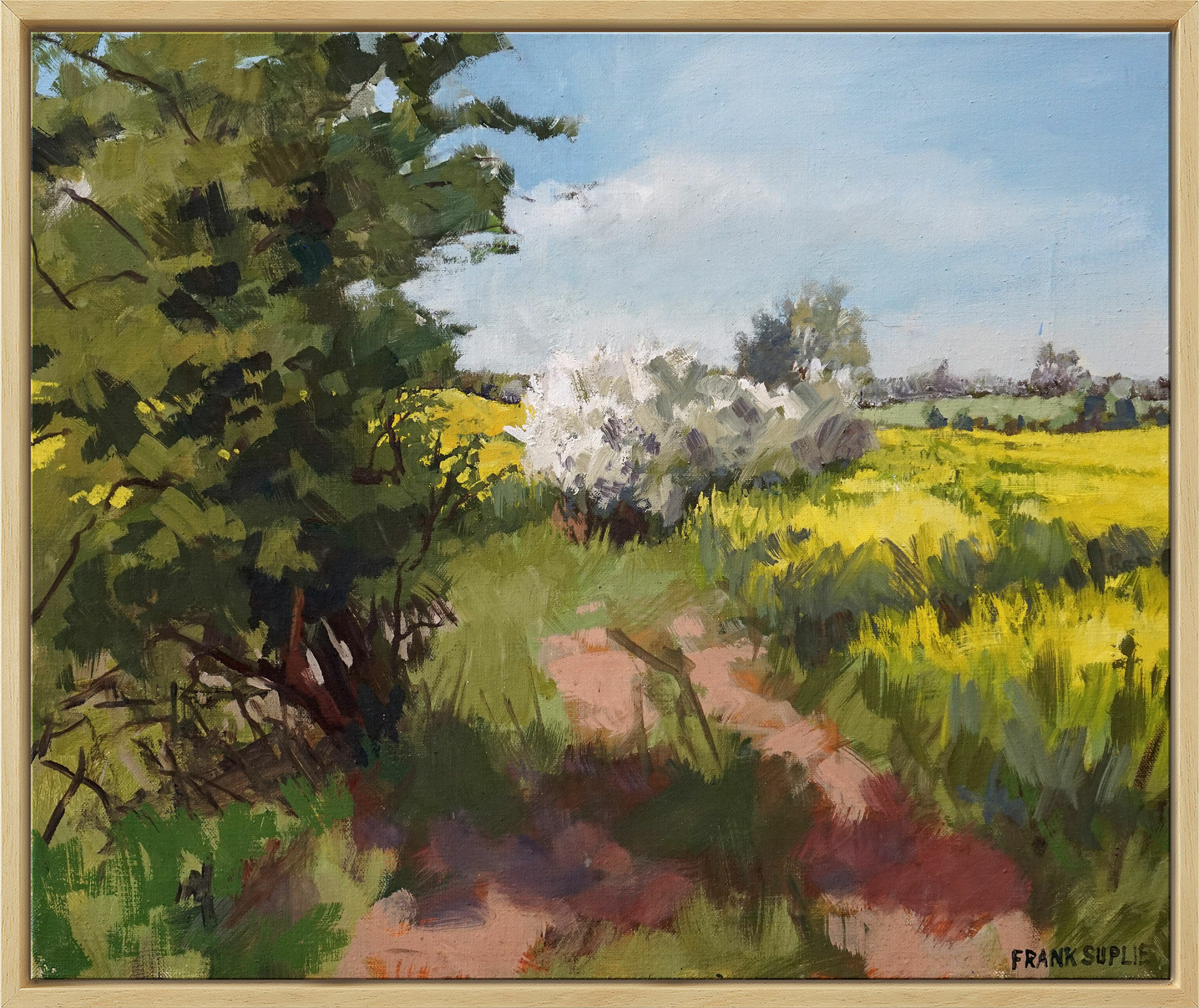Picture "Hawthorn Rape" (2015) (Original / Unique piece), framed


Picture "Hawthorn Rape" (2015) (Original / Unique piece), framed
Quick info
original painting | signed | egg tempera on canvas | on stretcher frame | framed | size 53 x 63 cm (h/w)
Detailed description
Picture "Hawthorn Rape" (2015) (Original / Unique piece), framed
Original painting 2015, signed. Egg tempera on canvas, stretched on a stretcher frame. Stretcher frame size 50 x 60 cm (h/w). Framed in a natural-coloured solid wood shadow gap frame. Size 53 x 63 cm (h/w).
Producer: ars mundi Edition Max Büchner GmbH, Bödekerstraße 13, 30161 Hanover, Germany Email: info@arsmundi.de
About Frank Suplie
Frank Suplie (born in 1950) paints the essence of the landscape under the open sky. Suplie is a holder of the German Worpswede scholarship and master student of Prof. Fußmann. Like all Northern German realists, for him, the motif has priority, and he would never omit anything. He rarely uses grey or brown, certainly not dirty colours. He rather likes to use pastel tones, which selectively increase to a pure red or yellow. Frank Suplie's painting ranges in this bright scale, and he masters it with virtuosity.
His landscape impressions are represented in many public collections.
A one-of-a-kind or unique piece is a work of art personally created by the artist. It exists only once due to the type of production (oil painting, watercolour, drawing, lost-wax sculpture etc.).
In addition to the classic unique pieces, there are also the so-called "serial unique pieces". They present a series of works with the same colour, motif and technique, manually prepared by the same artist. The serial unique pieces are rooted in "serial art", a genre of modern art that aims to create an aesthetic effect through series, repetitions, and variations of the same objects or themes or a system of constant and variable elements or principles.
The historical starting point is considered to be Claude Monet's "Les Meules" (1890/1891), where, for the first time, a series was created that went beyond a mere group of works. The other artists, who addressed to the serial art, include Claude Monet, Piet Mondrian and above all Gerhard Richter.


